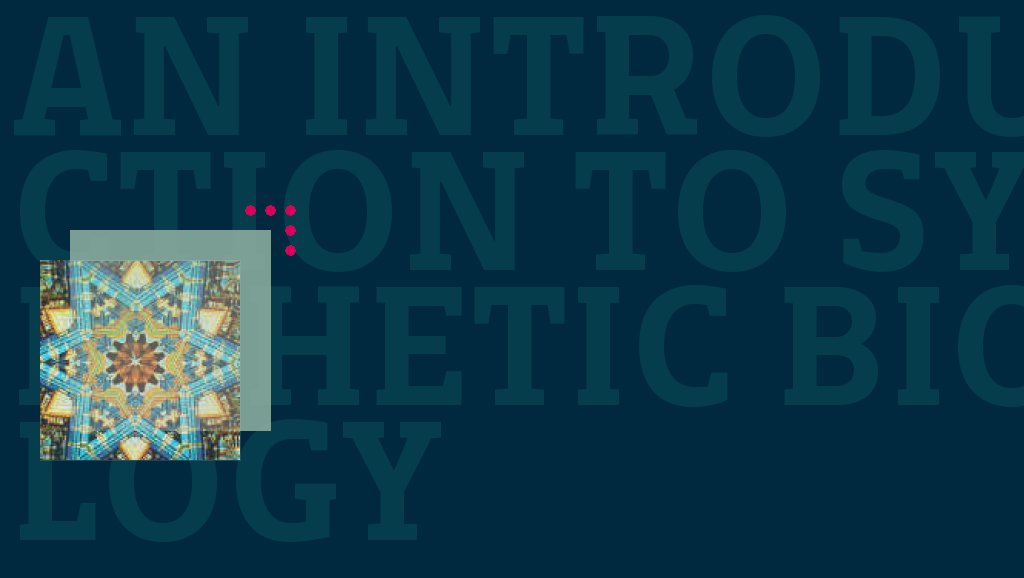The first question must be what is synthetic biology? Variously touted as pertaining to the discipline of engineering, biology, genetics, nanotechnology or computing, the most common description is that of applying the concept of engineering to biological organisms. But what does that actually mean?
In order to understand more about the techniques I would like to take a look at a report entitled Synthetic Biology: scope, applications and implications published in London by The Royal Academy of Engineering in May of 2009.
The report explains that “Synthetic biology aims to design and engineer biologically based parts, novel devices and systems as well as redesigning existing, natural biological systems”. Practitioners use a systems approach, with the aim of seeing the organism as an complete functional entity and not just as a series of isolated elements, this approach then used as the basis for engineering applications. The system is described in terms of mathematical equations, allowing the reduction of the system to biological parts (bioparts) whose function is expressed in terms of input/output characteristics. Once these parts have been described in terms of their function, isolated, standardised and syntheticaly reproduced, they can then be combined to from new organisms, very much in the way that an engineer would build a machine using standard devices built from standard parts. These standard parts are themselves defined by their DNA, and this can be manipulated in order to make the perfect part for the perfect device. Create the part, put in it a carrier cell (known as chassis) and Bob’s your Uncle, you can start to construct your organism.
The Biobricks Foundation is a not for profit organization that aims to keep a register of these standard parts, maintaining open access and promoting technical standardization, something that is seen as holding the key to the further development of synthetic biology.
Obviously to do this you require technical expertise, the process requires computational modeling in order to analyze the complexities of biological entities and to predict system performance. You require DNA sequencing in order to describe the genome and then of course DNE synthesis, to re-produce either part of or the entire genome itself.
But what are the potential areas of application for this technology, and what can they actually do now?
One of the main fields is undoubtedly medicine and health. Drugs can be produced that are more effective or have fewer or even no side effects, as the genomes of their active components can be adjusted and synthesised. An example is the development of a synthetic version of the anti-malarial drug Artermisinin that could be industrially and cheaply mass produced. In the near future antibiotics could become much more efficient. An existing application is water that changes colour when in contact with different polluting agents making them instantly recognizable. Switches already exist that react to certain types of input. An example could be a cell that is part of a persons body that reacts to the stimulus of a certain chemical that in turn stimulates the production of another. Imagine for example a device that reacts to a chemical produced by a cancerous cell. This input causes a reaction that produces another chemical to counteract this presence. All working naturally using the body’s energy to function.
Other developments involve the energy sector, the production of plants for bio mass that are not as wasteful as those used today and even the development of synthetic aviation fuels.
In other fields a synthetic form of the silk produced by the Golden Orb spider is under development. This is an extremely strong, fine and lightweight material that could lead the way towards new specialist engineering materials.
The report concludes with a chapter on ethics, but seeing the enormity of the problem I would like to leave the ethical discussion to my second posting, that I will purely dedicate to reports addressing this problem.
In general this report does not make light reading, some parts are extremely technical and it is nearly 70 pages in length. It does however offer a 5, 10 and 25 year vision of developments and possible applications, while giving examples of present working practices and an outline of global funding and organizations. One aspect that I find interesting but that also makes comprehension difficult is the use of engineering language in all of the publications I have read during my preparation for these postings. Speaking about ‘switches’ and ‘machines’ and ‘devices’ or ‘computer memory’ but referring to a very small living, biological object certainly pushes my conceptual capabilities to their limits.
















